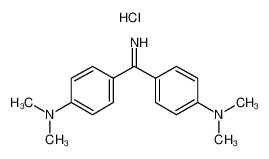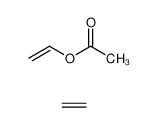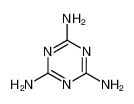| Product name | auramine O |
|---|
| Product number | - |
|---|---|
| Other names | Auramine Extra |
| Identified uses | For industry use only. |
|---|---|
| Uses advised against | no data available |
| Company | MOLBASE (Shanghai) Biotechnology Co., Ltd. |
|---|---|
| Address | Floor 4 & 5, Building 12, No. 1001 North Qinzhou Road, Xuhui District, Shanghai, China |
| Telephone | +86(21)64956998 |
| Fax | +86(21)54365166 |
| Emergency phone number | +86-400-6021-666 |
|---|---|
| Service hours | Monday to Friday, 9am-5pm (Standard time zone: UTC/GMT +8 hours). |
Acute toxicity - Oral, Category 4
Acute toxicity - Dermal, Category 3
Carcinogenicity, Category 2
2.2 GHS label elements, including precautionary statements| Pictogram(s) | 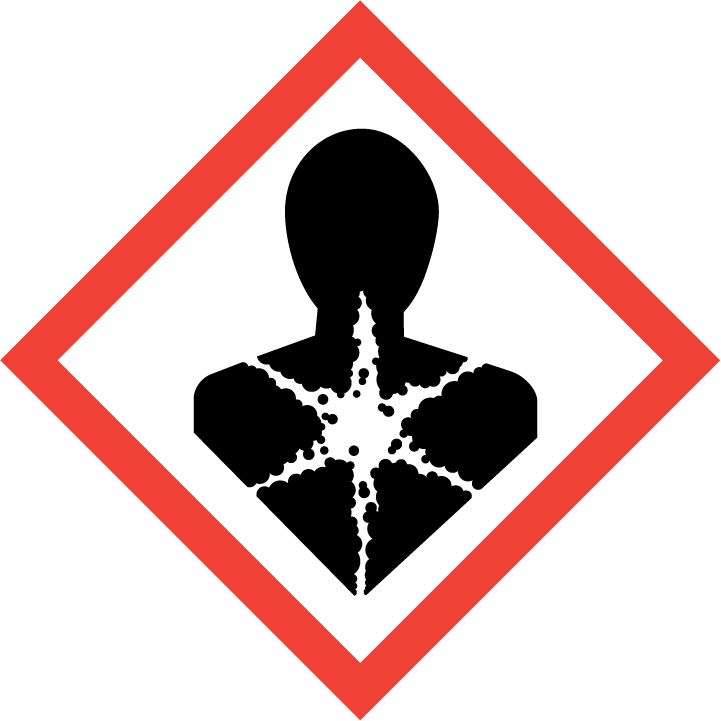 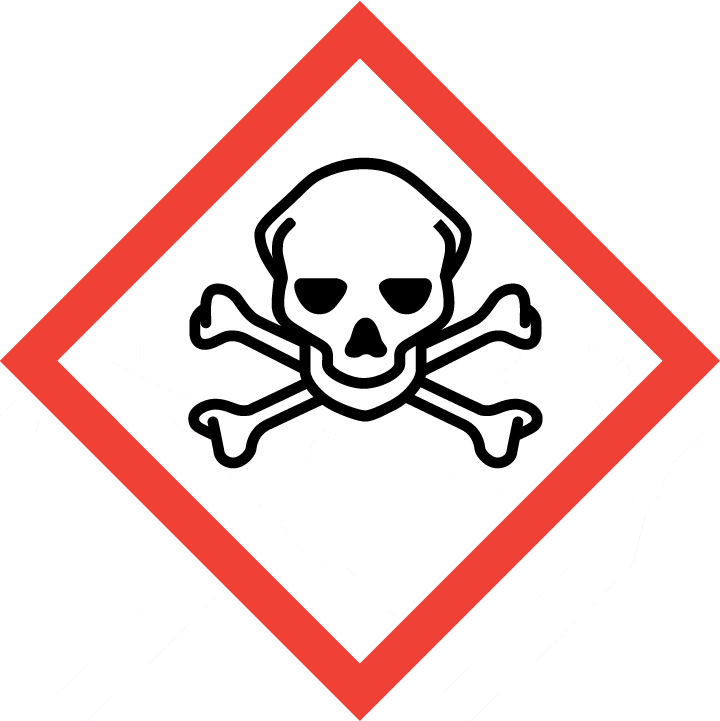 |
|---|---|
| Signal word | Danger |
| Hazard statement(s) | H302 Harmful if swallowed H311 Toxic in contact with skin H351 Suspected of causing cancer |
| Precautionary statement(s) | |
| Prevention | P264 Wash ... thoroughly after handling. P270 Do not eat, drink or smoke when using this product. P280 Wear protective gloves/protective clothing/eye protection/face protection. P201 Obtain special instructions before use. P202 Do not handle until all safety precautions have been read and understood. |
| Response | P301+P312 IF SWALLOWED: Call a POISON CENTER/doctor/…if you feel unwell. P330 Rinse mouth. P302+P352 IF ON SKIN: Wash with plenty of water/... P312 Call a POISON CENTER/doctor/…if you feel unwell. P321 Specific treatment (see ... on this label). P361+P364 Take off immediately all contaminated clothing and wash it before reuse. P308+P313 IF exposed or concerned: Get medical advice/ attention. |
| Storage | P405 Store locked up. |
| Disposal | P501 Dispose of contents/container to ... |
none
3.Composition/information on ingredients 3.1 Substances| Chemical name | Common names and synonyms | CAS number | EC number | Concentration |
|---|---|---|---|---|
| auramine O | auramine O | 2465-27-2 | none | 100% |
Consult a physician. Show this safety data sheet to the doctor in attendance.
If inhaledIf breathed in, move person into fresh air. If not breathing, give artificial respiration. Consult a physician.
In case of skin contactWash off with soap and plenty of water. Consult a physician.
In case of eye contactRinse thoroughly with plenty of water for at least 15 minutes and consult a physician.
If swallowedNever give anything by mouth to an unconscious person. Rinse mouth with water. Consult a physician.
4.2 Most important symptoms/effects, acute and delayedSYMPTOMS: Exposure to this compound may cause skin and eye irritation. It may also cause skin burns, dermatitis, eye irritation, edema of eyelids, hyperemia, corneal opacity, necrosis, corneal erosion, nausea and vomiting. ACUTE/CHRONIC HAZARDS: This compound is harmful if swallowed, inhaled or absorbed through the skin. It may cause skin and eye irritation. When heated to decomposition, this compound emits toxic fumes of carbon monoxide, carbon dioxide, nitrogen oxides and hydrochloride gas.
4.3 Indication of immediate medical attention and special treatment needed, if necessaryno data available
5.Fire-fighting measures 5.1 Extinguishing media Suitable extinguishing mediaFires involving this material can be controlled with a dry chemical, carbon dioxide or Halon extinguisher. A water spray may also be used.
5.2 Specific hazards arising from the chemicalFlash point data for this chemical are not available. It is probably combustible.
5.3 Special protective actions for fire-fightersWear self-contained breathing apparatus for firefighting if necessary.
6.Accidental release measures 6.1 Personal precautions, protective equipment and emergency proceduresUse personal protective equipment. Avoid dust formation. Avoid breathing vapours, mist or gas. Ensure adequate ventilation. Evacuate personnel to safe areas. Avoid breathing dust. For personal protection see section 8.
6.2 Environmental precautionsPrevent further leakage or spillage if safe to do so. Do not let product enter drains. Discharge into the environment must be avoided.
6.3 Methods and materials for containment and cleaning upPRECAUTIONS FOR "CARCINOGENS": A high-efficiency particulate arrestor (HEPA) or charcoal filters can be used to minimize amt of carcinogen in exhausted air ventilated safety cabinets, lab hoods, glove boxes or animal rooms ... Filter housing that is designed so that used filters can be transferred into plastic bag without contaminating maintenance staff is avail commercially. Filters should be placed in plastic bags immediately after removal ... The plastic bag should be sealed immediately ... The sealed bag should be labelled properly ... Waste liquids ... should be placed or collected in proper containers for disposal. The lid should be secured & the bottles properly labelled. Once filled, bottles should be placed in plastic bag, so that outer surface ... is not contaminated ... The plastic bag should also be sealed & labelled. ... Broken glassware ... should be decontaminated by solvent extraction, by chemical destruction, or in specially designed incinerators. /Chemical Carcinogens/
7.Handling and storage 7.1 Precautions for safe handlingAvoid contact with skin and eyes. Avoid formation of dust and aerosols. Avoid exposure - obtain special instructions before use.Provide appropriate exhaust ventilation at places where dust is formed. For precautions see section 2.2.
7.2 Conditions for safe storage, including any incompatibilitiesPRECAUTIONS FOR "CARCINOGENS": Storage site should be as close as practical to lab in which carcinogens are to be used, so that only small quantities required for ... expt need to be carried. Carcinogens should be kept in only one section of cupboard, an explosion-proof refrigerator or freezer (depending on chemicophysical properties ...) that bears appropriate label. An inventory ... should be kept, showing quantity of carcinogen & date it was acquired ... Facilities for dispensing ... should be contiguous to storage area. /Chemical Carcinogens/
8.Exposure controls/personal protection 8.1 Control parameters Occupational Exposure limit valuesno data available
Biological limit valuesno data available
8.2 Appropriate engineering controlsHandle in accordance with good industrial hygiene and safety practice. Wash hands before breaks and at the end of workday.
8.3 Individual protection measures, such as personal protective equipment (PPE) Eye/face protectionSafety glasses with side-shields conforming to EN166. Use equipment for eye protection tested and approved under appropriate government standards such as NIOSH (US) or EN 166(EU).
Skin protectionWear impervious clothing. The type of protective equipment must be selected according to the concentration and amount of the dangerous substance at the specific workplace. Handle with gloves. Gloves must be inspected prior to use. Use proper glove removal technique(without touching glove's outer surface) to avoid skin contact with this product. Dispose of contaminated gloves after use in accordance with applicable laws and good laboratory practices. Wash and dry hands. The selected protective gloves have to satisfy the specifications of EU Directive 89/686/EEC and the standard EN 374 derived from it.
Respiratory protectionWear dust mask when handling large quantities.
Thermal hazardsno data available
9.Physical and chemical properties| Physical state | yellow powder |
|---|---|
| Colour | Yellow powder |
| Odour | no data available |
| Melting point/ freezing point | 188°C(lit.) |
| Boiling point or initial boiling point and boiling range | 137°C |
| Flammability | no data available |
| Lower and upper explosion limit / flammability limit | no data available |
| Flash point | 42°C(lit.) |
| Auto-ignition temperature | no data available |
| Decomposition temperature | no data available |
| pH | no data available |
| Kinematic viscosity | no data available |
| Solubility | less than 1 mg/mL at 17.78°C |
| Partition coefficient n-octanol/water (log value) | no data available |
| Vapour pressure | 8.31E-07mmHg at 25°C |
| Density and/or relative density | 1.01g/cm3 |
| Relative vapour density | no data available |
| Particle characteristics | no data available |
no data available
10.2 Chemical stabilityStable under recommended storage conditions.
10.3 Possibility of hazardous reactionsAURAMINE O is incompatible with strong oxidizing agents.
10.4 Conditions to avoidno data available
10.5 Incompatible materialsno data available
10.6 Hazardous decomposition productsno data available
11.Toxicological information Acute toxicity- Oral: no data available
- Inhalation: no data available
- Dermal: no data available
no data available
Serious eye damage/irritationno data available
Respiratory or skin sensitizationno data available
Germ cell mutagenicityno data available
CarcinogenicityThe Human Health Assessment Group in EPA's Office of Health and Environmental Assessment has evaluated auramine for carcinogenicity. According to their analysis, the weight-of-evidence for auramine is group B2, which is based on inadequate evidence in humans and sufficient evidence in animals. As a group B2 chemical, auramine is considered probably carcinogenic to humans. /Auramine/
Reproductive toxicityno data available
STOT-single exposureno data available
STOT-repeated exposureno data available
Aspiration hazardno data available
12.Ecological information 12.1 Toxicity- Toxicity to fish: no data available
- Toxicity to daphnia and other aquatic invertebrates: no data available
- Toxicity to algae: no data available
- Toxicity to microorganisms: no data available
Using an initial concn of 100 mg/L auramine hydrochloride, 0 %BOD was observed after a 2 week period in a biodegradation screening test using 30 mg/L sludge(1). Based on a five-day BOD value of 0.038 g/g determined in an aerobic aqueous screening test utilizing municipal waste activated sludge, a theoretical BOD value of 1.3% can be calculated for auramine hydrochloride(2,SRC).
12.3 Bioaccumulative potentialThe BCF range for auramine hydrochloride was experimentally determined to be 3.8-16 in a flow-through test using carp, Cyprinus Carpio(1). This BCF value indicates that auramine hydrochloride will not bioconcentrate in fish(SRC).
12.4 Mobility in soilAromatic amines have been observed to undergo rapid and reversible covalent bonding with humic materials in aqueous solution; the initial bonding reaction is followed by a slower and much less reversible reaction believed to represent the addition of the amine to quinoidal structures followed by oxidation of the product to give an amino-substituted quinone; these processes represent pathways by which aromatic amines may be converted to latent forms in the biosphere(4). In the absence of covalent bonding, one can estimate the adsorption potential based on the Koc value. Based on an experimental water solubility of 10,000 mg/L(2) and a recommended regression-derived equation(1), the Koc value for auramine hydrochloride can be estimated to be 27(SRC). According to a suggested classification scheme(3), this Koc value indicates that auramine hydrochloride will have very high soil mobility. However, using a structure estimation method(5), Koc values of 50,000 and 25,000 can be estimated for auramine hydrochloride and its parent compound, respectively, and these Koc values indicate that auramine hydrochloride will be immobile in soil(3,SRC).
12.5 Other adverse effectsno data available
13.Disposal considerations 13.1 Disposal methods ProductThe material can be disposed of by removal to a licensed chemical destruction plant or by controlled incineration with flue gas scrubbing. Do not contaminate water, foodstuffs, feed or seed by storage or disposal. Do not discharge to sewer systems.
Contaminated packagingContainers can be triply rinsed (or equivalent) and offered for recycling or reconditioning. Alternatively, the packaging can be punctured to make it unusable for other purposes and then be disposed of in a sanitary landfill. Controlled incineration with flue gas scrubbing is possible for combustible packaging materials.
14.Transport information 14.1 UN Number| ADR/RID: UN2811 | IMDG: UN2811 | IATA: UN2811 |
| ADR/RID: TOXIC SOLID, ORGANIC, N.O.S. |
| IMDG: TOXIC SOLID, ORGANIC, N.O.S. |
| IATA: TOXIC SOLID, ORGANIC, N.O.S. |
| ADR/RID: 6.1 | IMDG: 6.1 | IATA: 6.1 |
| ADR/RID: III | IMDG: III | IATA: III |
| ADR/RID: no | IMDG: no | IATA: no |
no data available
14.7 Transport in bulk according to Annex II of MARPOL 73/78 and the IBC Codeno data available
15.Regulatory information 15.1 Safety, health and environmental regulations specific for the product in question| Chemical name | Common names and synonyms | CAS number | EC number |
|---|---|---|---|
| auramine O | auramine O | 2465-27-2 | none |
| European Inventory of Existing Commercial Chemical Substances (EINECS) | Listed. | ||
| EC Inventory | Listed. | ||
| United States Toxic Substances Control Act (TSCA) Inventory | Listed. | ||
| China Catalog of Hazardous chemicals 2015 | Not Listed. | ||
| New Zealand Inventory of Chemicals (NZIoC) | Listed. | ||
| Philippines Inventory of Chemicals and Chemical Substances (PICCS) | Listed. | ||
| Vietnam National Chemical Inventory | Listed. | ||
| Chinese Chemical Inventory of Existing Chemical Substances (China IECSC) | Listed. | ||
| Creation Date | Aug 11, 2017 |
|---|---|
| Revision Date | Aug 11, 2017 |
- CAS: Chemical Abstracts Service
- ADR: European Agreement concerning the International Carriage of Dangerous Goods by Road
- RID: Regulation concerning the International Carriage of Dangerous Goods by Rail
- IMDG: International Maritime Dangerous Goods
- IATA: International Air Transportation Association
- TWA: Time Weighted Average
- STEL: Short term exposure limit
- LC50: Lethal Concentration 50%
- LD50: Lethal Dose 50%
- EC50: Effective Concentration 50%
- IPCS - The International Chemical Safety Cards (ICSC), website: http://www.ilo.org/dyn/icsc/showcard.home
- HSDB - Hazardous Substances Data Bank, website: https://toxnet.nlm.nih.gov/newtoxnet/hsdb.htm
- IARC - International Agency for Research on Cancer, website: http://www.iarc.fr/
- eChemPortal - The Global Portal to Information on Chemical Substances by OECD, website: http://www.echemportal.org/echemportal/index?pageID=0&request_locale=en
- CAMEO Chemicals, website: http://cameochemicals.noaa.gov/search/simple
- ChemIDplus, website: http://chem.sis.nlm.nih.gov/chemidplus/chemidlite.jsp
- ERG - Emergency Response Guidebook by U.S. Department of Transportation, website: http://www.phmsa.dot.gov/hazmat/library/erg
- Germany GESTIS-database on hazard substance, website: http://www.dguv.de/ifa/gestis/gestis-stoffdatenbank/index-2.jsp
- ECHA - European Chemicals Agency, website: https://echa.europa.eu/





